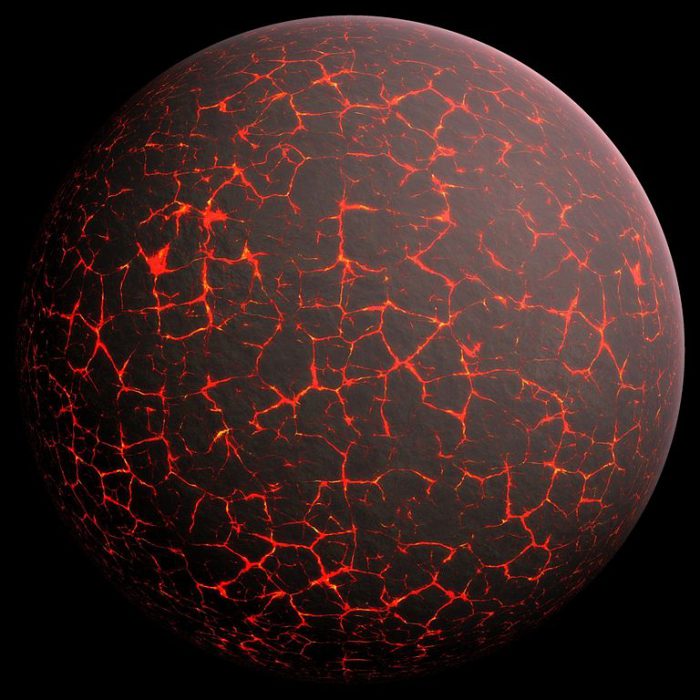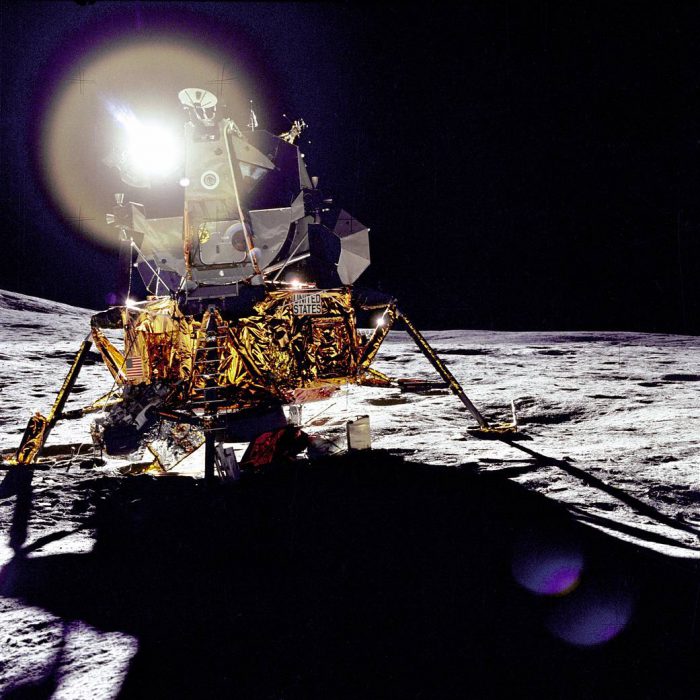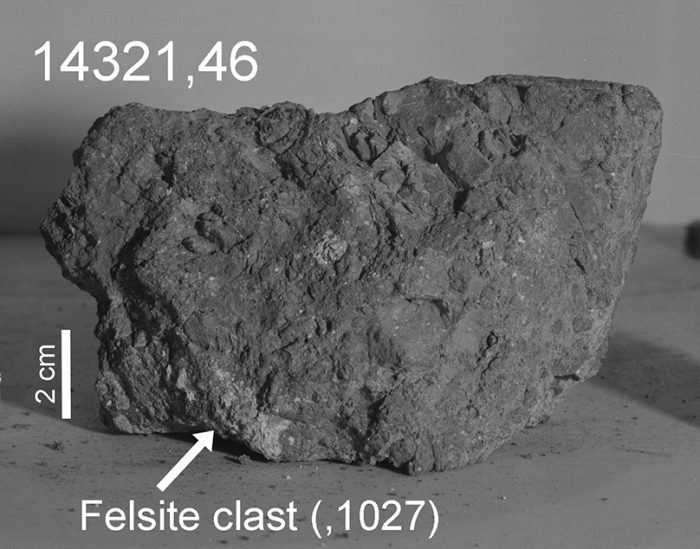A group of scientists believe that they've discovered a piece of the Earth embedded in a rock that was brought back from the surface of the Moon.
The piece itself is a mix of quartz, feldspar, and zircon crystals. It measures only about two centimetres (1 inch) long. The moon rock that it's stuck in—known as Big Bertha—was brought here in 1971 by the astronauts on the Apollo 14 mission.
And it is 4 billion years old.
Hold on, wait a sec...
Before we go any further, let's take a moment to consider what this means.
A chunk of rock went from the Earth ... to the Moon. That's quite the trip for something that can't actually move by itself! How exactly did this bit of Earth make its lunar journey in the first place?
Good question—the answer to it may confirm a lot about the early history of Earth.
Crash! Bam! ZOOM!

An artist's impression of how Earth may have looked during the Hadean Era. (Wikimedia Commons)
Earth is about 4.54 billion years old (give or take 50 million years). During the first billion or so years of our planet's history, its moon was about three times closer than it is now. But three times closer still equals a distance of about 130,000 km (80,000 miles). So it's not as though some T. rex threw it there or something.
(Yes, yes, we know. The T. rex didn't arrive on Earth for another 3 billion years or so. We just thought the idea of a T. rex throwing a rock on the Moon was funny. With those arms? Come on, haha. Anyway, where were we...)
The first billion years of Earth's history were very different than the world we know now. This time period is called the Hadean Era for a reason—Hades was the Greek ruler of the underworld and the planet was a hellish mix of volcanoes, noxious gases, and brutal heat. Its surface was also bombarded by the many meteors and asteroids that were flying through our young solar system. Not a nice place.
Ping pong

The Apollo 14 lander. The crew of this craft brought the Big Bertha rock back to Earth. (NASA)
So here's what scientists think happened. Around 3.9 billion years ago, an asteroid slammed into the surface of Earth with such force that blasted pieces of the planet literally into outer space. At least one of these pieces (though almost certainly many more) made it the Moon, where it was incorporated into its surface.
Then 26 million years ago, another asteroid smacked into the Moon, creating a crater today known as Cone Crater. This event brings our shard of Earth near the surface.
Fast forward to 1971, when Apollo 14 just happens to land near Cone Crater. One of the two astronauts on the surface—either Alan Shepard and Edgar Mitchell—thinks "Hey, this rock looks good!", picks up Big Bertha, and presto! Our little piece of Earth was on its way home!
Not the oldest known
This chunk of our planet is not quite the oldest rock known on Earth. Samples from Western Australia date back about 4.4 billion years—nearly the exact age of the planet. But this slice of Big Bertha is pretty much as old as Earth can get. And the story of its journey? It is still just a theory, but origin stories don't get much better.
Either way, welcome home, old friend!
 A small part of this moon rock appears to have originally come from Earth. (NASA)
A small part of this moon rock appears to have originally come from Earth. (NASA)










WOW. I’m amazed by how long this ancient piece of Earth on a moon rock even got there. my favourite information is: The first billion years of Earth’s history were very different than the world we know now. This time period is called the Hadean Era for a reason—Hades was the Greek ruler of the underworld and the planet was a hellish mix of volcanoes, noxious gases, and brutal heat.